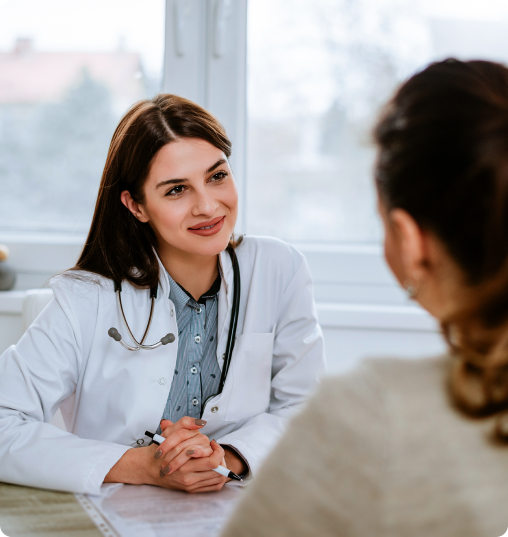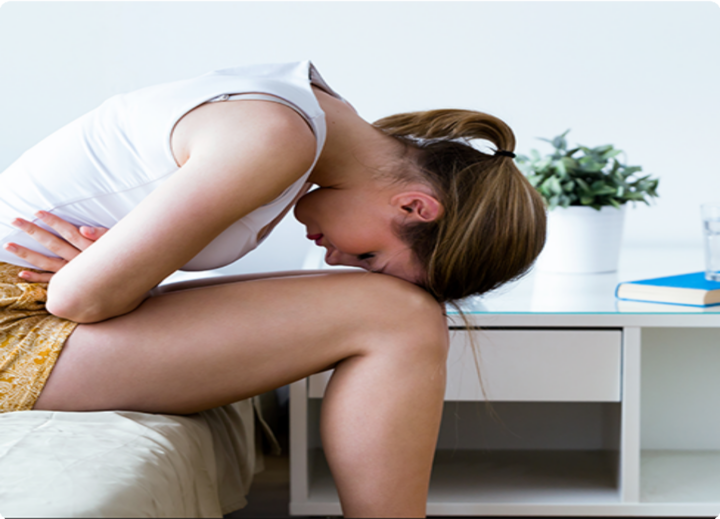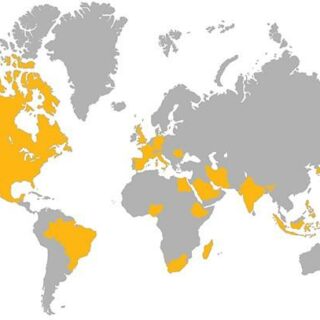Pelvic pain is a debilitating condition that is often ignored or undiagnosed by your OBGYN and health care providers. The great majority of pelvic pain is from misdiagnosed GYN conditions such as endometriosis and adenomyosis. Every women should be able to live a pain-free life without the stress, anxiety, and lifestyle disruption of chronic pelvic pain. Avoid “delay in care” with repeated imaging studies with inconvenience and increased cost, and with referrals to urologists and gastroenterologists that perform unnecessary tests and cannot diagnosis the cause.
See a CIGC specialist who understands how to diagnose and treat the condition causing your pain.
Break Free from Pelvic Pain – Take control of your health and get back to a pain free life.
“I was constantly focusing on my pain and wondering if other people could see me in pain. I feel free now.”
-TASHA
Back to Top
Pelvic pain is often “multifactorial” which means from many different causes. CIGC specialists understand how pain from many different GYN causes can present, and how debilitating it can be. Dealing with pelvic pain patients constantly, CIGC understands how common conditions such as endometriosis and adenomyosis are often completely missed by your OBGYN. Review the following conditions and symptoms to help understand what your cause of pain may be, and how CIGC can help.
Back to TopEndometriosis occurs when the lining of the uterus that sheds and causes bleeding during your menstrual cycle is present OUTSIDE the uterus: Endometri (endometrial lining) osis (outside). The lining “implants” or grows on the peritoneal lining – a thin lining that covers all organs. Since the peritoneal lining has an excellent nerve supply, implants of endometriosis on the lining bleeding into the lining and irritate the lining causing severe pain.
Symptoms:
Severe pain with the cycle, heavy bleeding, pelvic pressure, pain with intercourse infertility.
Diagnosis:
ONLY by Laparoscopy. Imaging studies such as ultrasound, MRI, and CT scan CANNOT MAKE THE DIAGNOSIS since the implants are too small to be seen. The diagnosis can NOT be made by an OBGYN in the office. Surgery is needed to confirm that endometriosis is present, and determine the extent of the disease (staging).
Treatment:
Laparoscopic minimally invasive surgery to excise (remove) implants on ALL organs. Ablation (burning) should not be used since it will not remove all disease. Surgical treatment allows for removal of all disease, and STAGES the disease from 1 – 4.
Controversies:
Adenomyosis is the lining of the uterus growing into the muscle of the uterus. The lining bleeds into the muscle causing severe symptoms. This condition is NOT detected by ultrasound, and the diagnosis is made through “clinical suspicion” – through symptoms of the disease. Adenomyosis is usually NOT diagnosed by the OBGYN.
Symptoms:
Very SEVERE pain with menstrual cycles, heavy bleeding, BACK PAIN. Incapacitating symptoms that can severely affect normal activities.
Diagnosis:
By clinical symptoms. MRI can be used to detect the disease. Ultrasound and CT CANNOT diagnosis adenomyosis.
Treatment:
The best short and long term option is PARTIAL hysterectomy in which the ovaries are preserved to maintain hormone production, and the cervix is preserved to maintain pelvic floor support and sexual function.
Controversies:
Fibroids are smooth muscle growths in the uterus that can become a source of pain. Fibroids are best diagnosed with ultrasound – an inexpensive and sensitive test for evaluation of the number and location of fibroids present.
Symptoms:
Pain, bleeding, frequency of urination, pelvic pressure and pain, bloating and distension.
Diagnosis:
Ultrasound is the best single method to diagnose the number and location of fibroids present.
Treatment:
Surgical removal by LAAM myomectomy preserves the uterus for fertility while removing all fibroids present with small incisions and a recovery of only 7 – 10 days. DualportGYN hysterectomy removes the uterus for those patients who do not want fertility with a recovery of 7 days back to work.
Controversies:
Patients with prior surgical procedures can have high rates of adhesion formation which will cause pain due to organs “sticking” to each other. Adhesions between organs causes pain which CAN ONLY BE RELIEVED with laparoscopic LYSIS OF ADHESIONS – removal of adhesions or scar tissue between organs.
Symptoms:
Continuous pain with a history of prior pelvic surgery.
Diagnosis:
CANNOT BE MADE with imaging studies such as ultrasound, CT or MRI – adhesions are too thin to be diagnosed by these studies.
Treatment:
Surgical LYSIS OF ADHESIONS, which means surgical removal of adhesions to alleviate pain
Controversies:
IBS is an uncommon cause of pelvic pain. Any patient with pelvic pain should be assessed for another cause other than IBS. All too often, OBGYN’s and health care providers give patients this diagnosis without justification, and all too often patients have a different cause of pelvic pain such as endometriosis, adenomyosis, fibroids, adhesions, interstitial cystitis, or some other cause of pain that is not diagnosed.
IBS should NOT be a “wastebasket” category for pelvic pain made by any practitioner. Should you be diagnosed with IBS as a cause of pain, seek out the specialists at CIGC for more information and a diagnosis for pelvic pain that can be justified by your symptoms and history.


Patients with pelvic pain need to see a specialist for a complete evaluation, accurate diagnosis, and targeted treatment for the cause of pain. Specialists are an invaluable resource: their experience allows them to listen to patient’s symptoms and often determine a diagnosis without imaging studies or other intervention.
OBGYN delay in care often occurs in patients with pelvic pain, and can cause prolonged and progressive pain, psychological stress, and advanced disease that can further increase pain and cause infertility. Delay in care NEEDS TO BE AVOIDED by seeking out a specialist to rapidly diagnosis and treat
the cause of pain.
CIGC specialists are available to help. Contact us immediately for more information on how we can rapidly diagnose your condition and treat your pain.
Back to TopA member of our patient care team would be happy to walk you through what to expect, answer your questions and help you get started with your treatment process.
Find Relief Today
Superior Surgical Outcomes Published in Top Medical Journals
The DualPortGYN procedure has been proven superior to other minimally invasive techniques and open surgery. In addition, we have shown that these procedures can be performed safely and more efficiently in an ambulatory surgery center.
Our nationally and internationally renowned techniques have been published in prestigious medical journals due to exceptional patient outcomes.


Interstitial cystitis is a bladder condition that can cause pelvic pain. The cause of interstitial cystitis – or IC – is unknown but thought to be due to a “denudation of the bladder lining” also known as a loss of the lining causing pain. IC is more common than many OBGYN’s understand, and should ALWAYS be assessed in any patient with endometriosis, since the incidence of endometriosis and IC can coexist in up to 80 percent of patients.
Symptoms:
Pelvic pain, bladder pain, pain with urination, bladder pressure and pain
Diagnosis:
Often made by clinical symptoms and by cystoscopy. Cystoscopy with hydrodistension – filling the bladder with water and checking for petechiae (red areas consistent with defects in the bladder lining) can help make the diagnosis.
Treatment:
Hydrodistention can help with symptoms, and in some patients becomes a method of treatment. Avoiding certain foods such as coffee, red pepper, and others can help control symptoms.
Schedule a consultation to learn more about how we can treat your condition today.